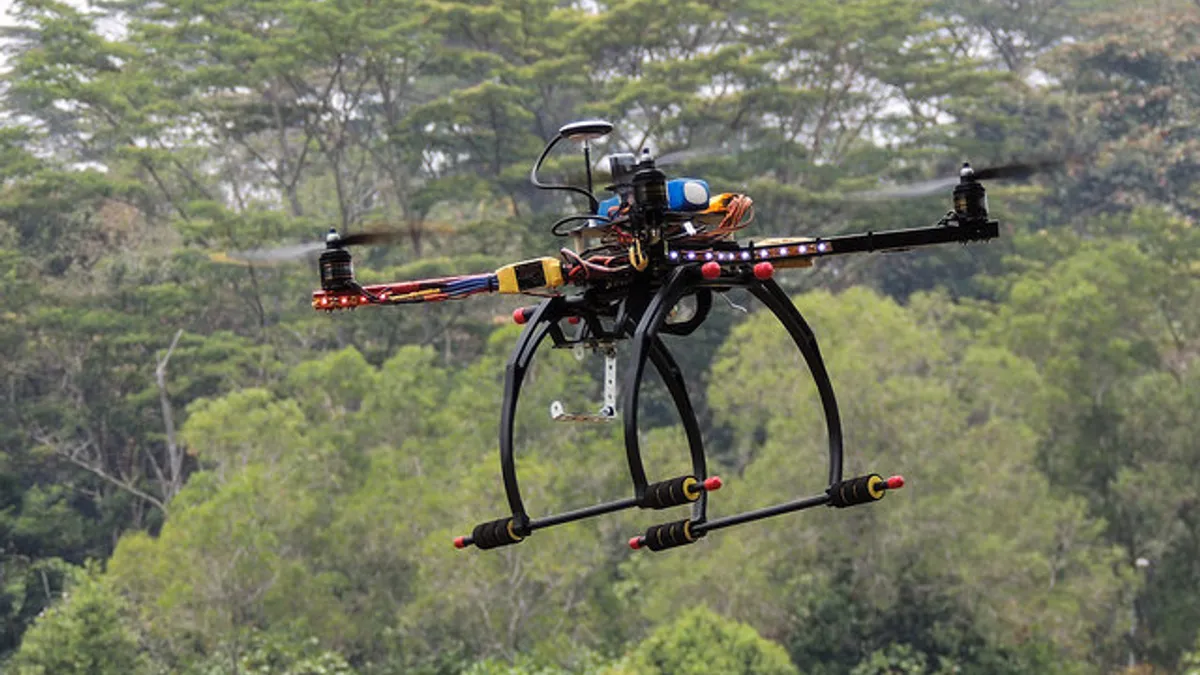Dive Brief:
- The Federal Aviation Administration (FAA) completed the first four pilots in its Unmanned Aircraft Systems Integration Pilot Program, according to an email sent out by the administration, as reported by Robotics Business Review and others.
- The four pilots cover a wide range of applications for commercial drones, including healthcare materials delivery in North Carolina, consumer delivery in Virginia, providing bait to capture feral hogs in Oklahoma, and a beyond line of visual sight flights aimed at agricultural applications in Kansas.
- These four pilots and the six more to come will be evaluated over the next two years to help the government determine how drones can be safely regulated at the federal, state and local level.
Dive Insight:
Drone-dependent businesses and enthusiasts are watching these pilots closely to take the FAA's temperature on when crucial regulations will be enacted in order to expand the commercial possibilities of drones today. The FAA currently has more than 1 million registered drones and 100,000 pilots working in various industries under current laws.
Upcoming pilots include using drones for border protection and food delivery in California, spraying for mosquitos in Florida, supporting airport operations in Tennessee, time-sensitive emergency medical equipment delivery in Nevada and pipeline inspection in Arkansas, as well as a test with multiple applications including agriculture, media and infrastructure inspection in North Dakota.
Though the pilots will primarily inform FAA and Department of Transportation rulemaking, acting FAA Administrator Dan Elwell recently told Commercial UAV News that the pilots are also for local governments to see the possibilities offered by drones and start to imagine local regulations, since the common commercial use of drones could vary based on the prevalent industries in each municipality. Elwell explained that the FAA has encouraged local authorities to take the lead in conducting these pilots to that end. He described a potential regulatory framework similar to the rest of the aviation sector today, wherein federal regulations are more broad and local authorities make specific rules about operations within their borders.
Though Elwell acknowledged that the "beyond the line of sight rule" is the most pressing concern for the industry, he said he is asked most frequently about the safety and privacy concerns regarding drones flying over people since most drones use cameras to operate.
What will be essential for all commercial drones, said Elwell, is remote identification capability and "sense and avoid" capabilities, meaning drones must be able to avoid mid-air collisions with other aircraft or tall structures without human interaction.














